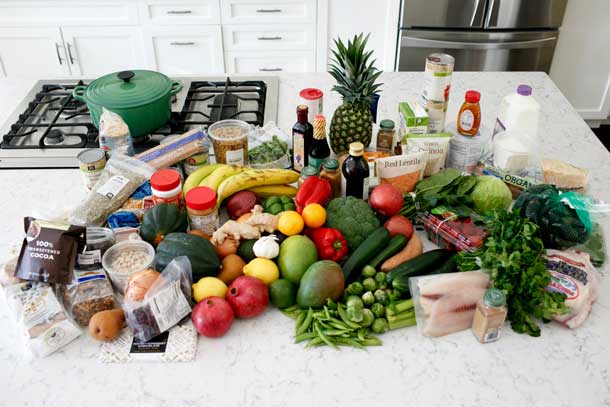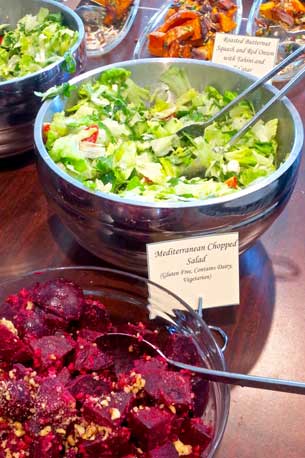

Food Porn and Hyped Food Health
THUNDER BAY – LIVING – (Zester Daily) – With ubiquitous food porn and hyped health headlines, 2015 was the year of sizzle over substance. At Oldways, a 25-year-old nonprofit celebrating cultural food traditions, we predict 2016 will reverse that formula with these six food trends for the new year that will affect what we put on our plates.
Our appetite for healthy food continues to grow

The movement toward healthier food choices continues to gain momentum. A recent Euromonitor survey projects global sales of healthy food products will hit $1 trillion by 2017, almost doubling the figure from 2007. It’s no wonder as consumers are now exposed to, and educated about, food choices practically everywhere: restaurants, grocery stores, TV food shows and schools. Based on Nielsen data, with nearly 9 in 10 (88 percent) willing to pay more for foods with health attributes, this provides significant incentive and opportunity for manufacturers developing new products.
Sustainable diets move to the center plate
One diet does not fit all, but research points to plant-based diets such as the Mediterranean Diet and Vegetarian Diet as the gold standard for good health and sustainability. In unexpected places like the airport (e.g., San Francisco International Airport’s Napa Farms Market) and the strip mall (e.g., LYFE Kitchen, Sweetgreen), food establishments are increasingly touting a twofold mission to offer healthy and sustainable fare. Despite being struck from the Dietary Guidelines, sustainability, for many scientists, tops the list of priorities for a healthy diet. “A plant-based diet presents major advantages for health, the environment, use of resources and animal welfare,” said Neal Barnard, president of the Physicians Committee for Responsible Medicine, and featured presenter at Oldways Finding Common Ground, a conference devoted to clarifying distorted nutrition messages.
Food literacy finally catches hold
The term “food literacy” is gaining currency. Thanks to the 75 million members of the experiential millennial generation, and technology, the youngest American adults connect good health with knowing where their food comes from and who produces it. As Eve Turow, author of “A Taste of Generation Yum,” said in an interview in The Atlantic, “food is also allowing us to access the globe, so we can find out what harissa is made with and how to prepare something with it, in two seconds on our phones.” This extends to appreciation for personal food traditions and a desire to reconnect with the culture of one’s ancestors. That’s good news, as heritage is an ever more powerful motivator for healthier eating, inspiring home cooking, which saves an average of 200 calories per meal.
Supermarkets are the new health hubs

According to the Food Marketing Institute, a food retail trade group, Americans make 1.5 trips to the grocery store each week. That far outstrips visits to health care providers. To help customers make balanced food choices, supermarkets like Hy-Vee, Wegmans and Giant Eagle are hiring registered dietitians in their stores. These RDs will bring good health to consumers (and financial health to the grocery business) by demonstrating how to move healthier choices from shelf to table.
Raw milk cheese is hot
More than half of all cheese lovers say they prefer raw milk cheeses (think Le Gruyère AOP, Parmigiano-Reggiano, Roquefort, Grafton Village Cheddar, and Pont-l’Évêque, a favorite of Prince Charles) and purchase them regularly, according to the Oldways Cheese Coalition 2015 Raw Milk Cheese Consumption and Attitudes Survey.
However, the FDA is looking carefully at unpasteurized cheese, and new regulations could limit availability of traditional cheeses in the United States. Still, 90 percent of U.S. cheese lovers believe they should be able to choose raw milk cheeses. This may be the impetus to give these products, created through the old ways of cheese making, the attention they deserve.
Increased consensus on what to eat
A study in the Journal of Health Communication showed contradictory nutrition news creates consumer confusion, leading people to doubt health and nutrition recommendations. But that may change.
With the imminent release of the updated Dietary Guidelines, along with movements such as Oldways Common Ground — launched with a gathering of 75 top nutrition scientists, medical experts and media members to reach consensus on what Americans should be eating — and the True Health Initiative, started by Yale University Prevention Research Center’s founding director David Katz, which enlists hundreds of experts to spread evidence-based truths about lifestyle as medicine, clarity will begin to trump confusion.
Sara Baer-Sinnott is the president of Oldways, a Boston-based nonprofit food and nutrition education organization. Oldways’ mission is to guide people to good health through cultural food traditions and lifestyles, using practical and positive programs grounded in science. Simply put: We advocate for the healthful pleasures of real food. Oldways is the parent organization for The Whole Grains Council and The Mediterranean Foods Alliance, and is well-known for creating the Whole Grain Stamp and the Mediterranean Diet Pyramid. We invite you to connect with us on our website, Facebook and Twitter.
By Sara Baer-Sinnott






